Five years is a long time for anything to hold relevance in today’s world with people’s attention span dwindling by second. Five years ago, the world was in lockdown, griped by a life threatening pandemic and social distancing was the norm. In the midst of the masks and the sanitizers, arrived the 2nd Gen Mahindra Thar, a full-blown lifestyle product from Mahindra with an unspoken sales strategy of “You Live only Once” and for buyers that was enough. The Thar sold in volumes and cemented a name for itself, some good and some not so good.
But now five years later, in true Mahindra fashion, the Thar has received a facelift. It doesn’t reinvent the wheel it smoothens out the rough edges, fixes what needed attention. Here’s how the updated Thar shapes up and whether it still holds up.
Mahindra Thar Facelift – Exterior Design
From the outside, the changes are hard to tell and may even go unnoticed by a non-car person, however there are a few. The front grille now comes finished in body colour, giving the Thar a cleaner look, while the silver inserts on the front and rear bumpers make a return, adding some amount of contrast. A small but meaningful addition is the rear wiper and washer, something a lot Thar owners have been asking for since 2020.

The spare wheel on the tailgate now neatly integrates a rear-view camera in the hub. Two new colours have also been added, Tango Red and Battleship Grey both of which are picked up from the Roxx’s colour palette. The silhouette remains the same muscular, upright, and unmistakably 4×4. Another update is the discontinuation of the soft-top variants of the Thar, sad news for the top-down motorist
Mahindra Thar Facelift – Interior Design and Features
It’s inside the cabin where Mahindra’s updates start to make a real difference. The old 7-inch infotainment system has been replaced by a larger 10.25-inch unit borrowed from the Thar Roxx. It finally feels modern and up to speed with Apple CarPlay and Android Auto. The steering wheel too is new, lifted from the Scorpio N and Thar Roxx, and carries audio, phone, and cruise control buttons.
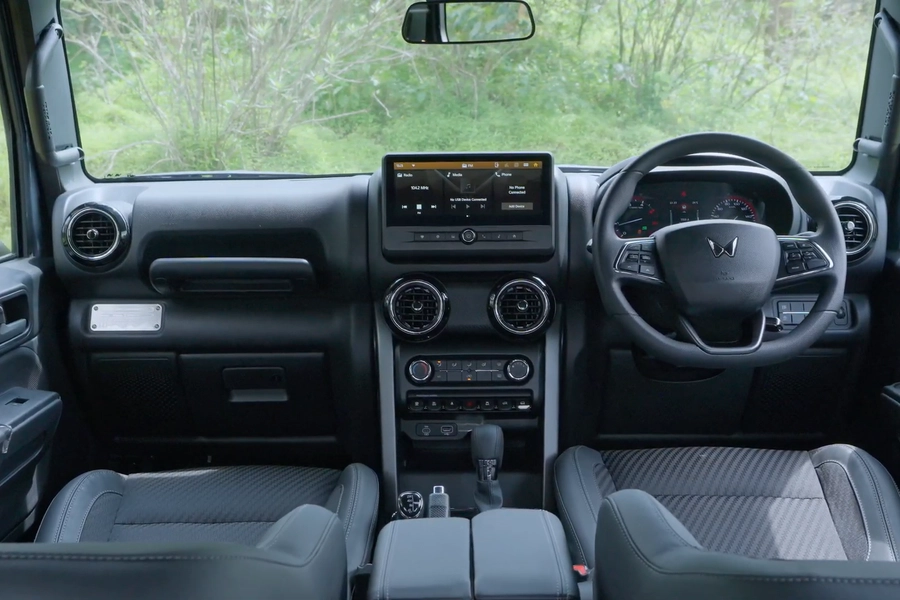
One of the most appreciated changes, though, is the relocation of the power window switches. They’ve finally been moved from the centre console to the doors, where they always should’ve been. Rear passengers now get dedicated AC vents, and there’s a front armrest with storage, wireless charging, and even an A-pillar grab handle for easier entry. It’s clear that Mahindra listened to customer feedback. Even small details like an internal fuel-lid release and reverse parking camera add convenience that was missing earlier.
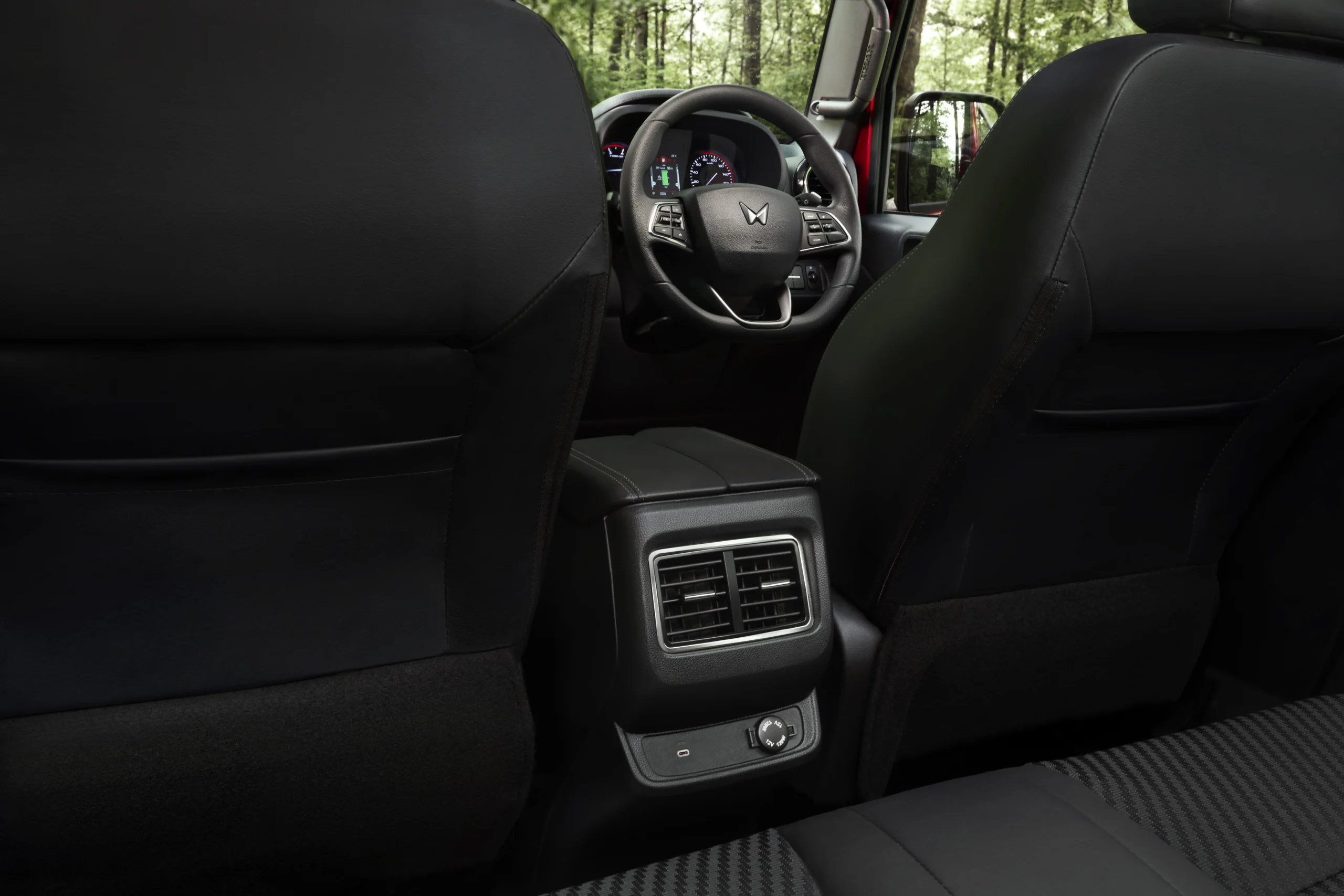
Mahindra Thar Facelift – Engines and Drivetrain
Mechanically, the facelifted Thar sticks to the same tried and tested engines. You still get the 1.5-litre turbo diesel for the rear-wheel-drive version, which benefits from the lowered GST rates and the sub-4m rule. Mahindra’s 2.2-litre mHawk diesel and 2.0-litre mStallion petrol are reserved for the 4×4 models. All engines continue with their existing power outputs and can be paired with either a 6-speed manual or a 6-speed torque converter automatic for the four-wheel drive variants.
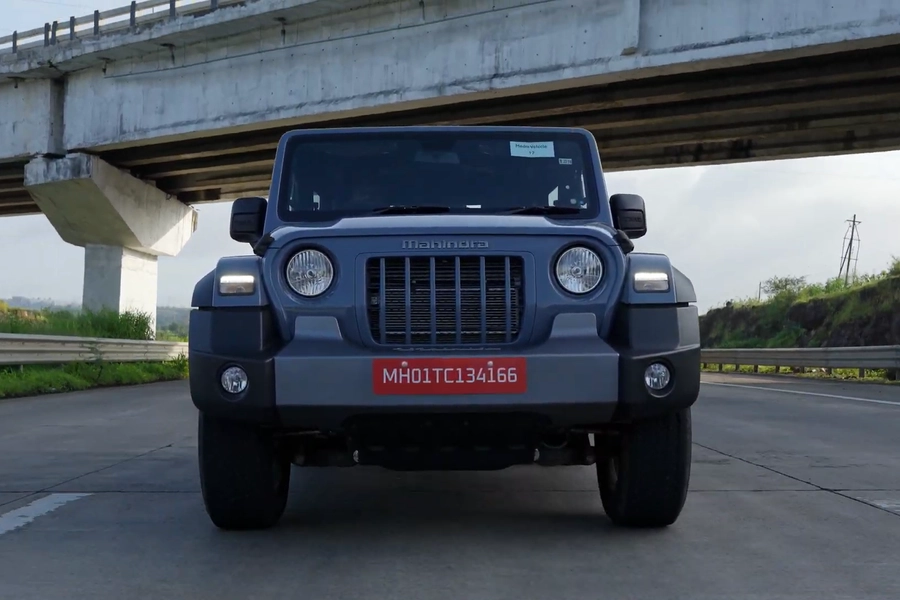
Mahindra Thar Facelift – Driving Dynamics
If there’s one thing Mahindra knows how to do right, it’s diesel engines. The 2.2-litre mHawk continues to be the pick of the lot, smooth, eager, and surprisingly refined for something that sits under a rugged 4×4. Spend a few minutes behind the wheel and you’ll start wondering why anyone would choose the petrol. It’s more fuel-efficient, offers a longer tank range a blessing on highways and trails.

The Thar 3-door is still very much an old-school off-roader at heart, and that shows once you hit the highway. Push it beyond its comfort zone and its tall, short-wheelbase proportions remind you of what it’s built for, trails and not triple-digit cornering. The body movements over sudden undulations can get unnerving, and any sharp dip or bump quickly unsettles your composure.
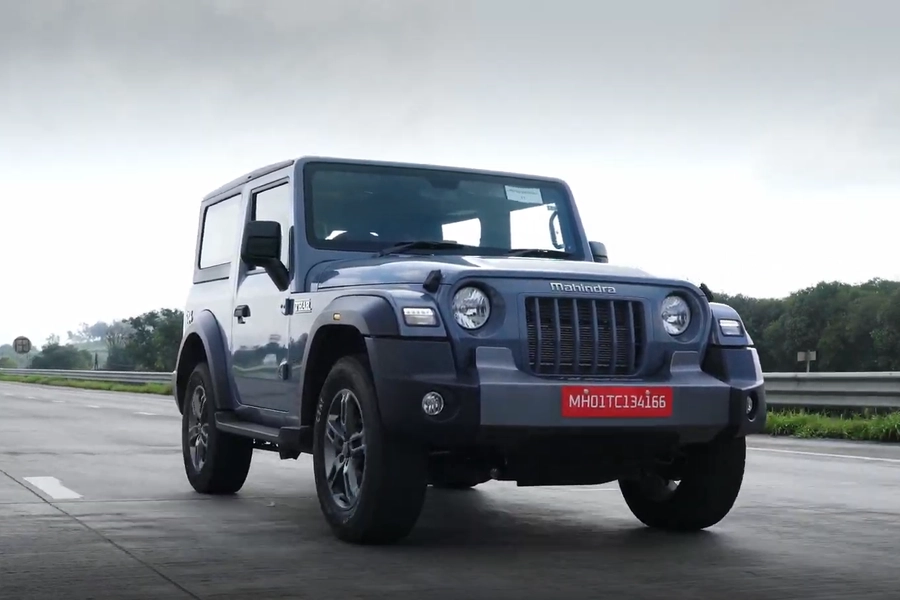
The shorter wheelbase, while great for off-road agility, plays against the Thar on open highways. At higher speeds, you’ll feel the height and weight work against stability, reminding you this isn’t like the Thar Roxx or Scorpio N. In fact, the Roxx stands a class apart with its more planted road manners and better on-road composure. Features like the Watt’s link rear suspension, which significantly improves ride stability, should have definitely made their way into this 3-door facelift. It would have elevated highway comfort without taking away the off-road DNA.
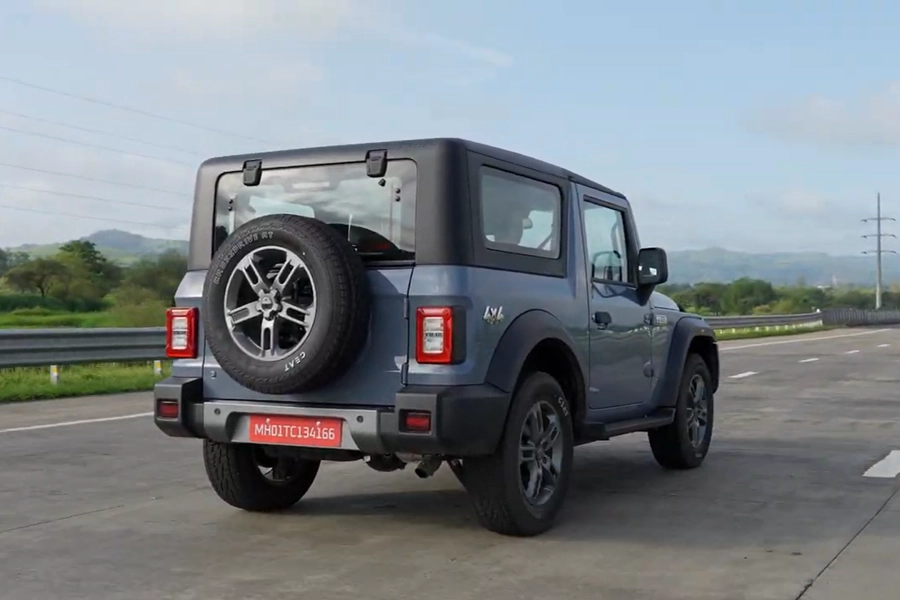
Interestingly, while many have voiced disappointment over Mahindra not introducing electronic power steering in the facelift, I’d argue otherwise. Mahindra deserves credit for sticking with the hydraulic setup. It’s heavier while crawling in city traffic, but it offers genuine feedback, the kind that connects you to the terrain and gives the Thar its authentic, mechanical feel. The Thar is, and should remain, a purpose-built off-roader first.
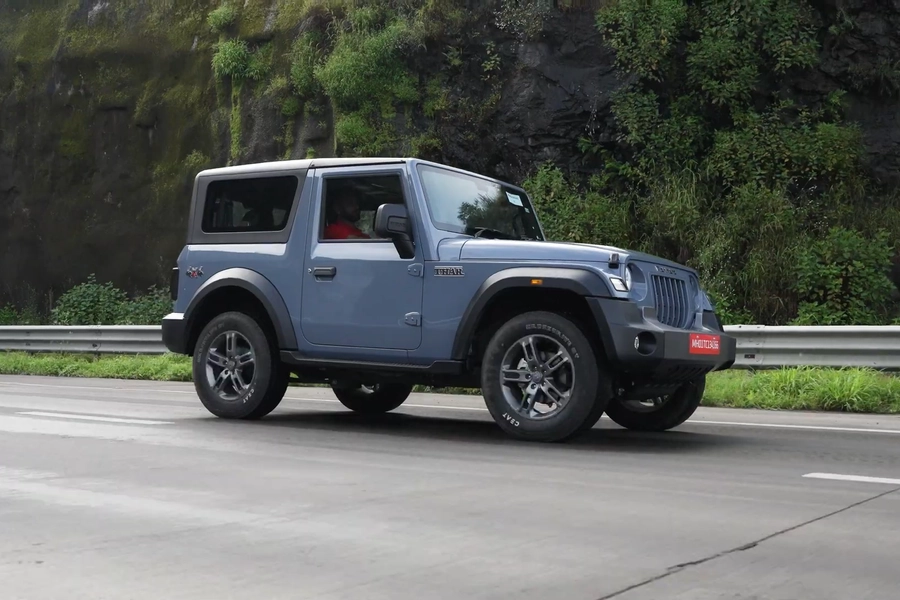
Mahindra Thar Facelift – Safety Features
The Thar Facelift retains its 4-star Global NCAP safety rating and continues to offer key aids like ESC, ABS, and EBD. It now gets a rear-view camera for better visibility, while the sturdy factory-fitted roll cage remains. Automatic variants also benefit from a new dead pedal, improving comfort and reducing driver fatigue.
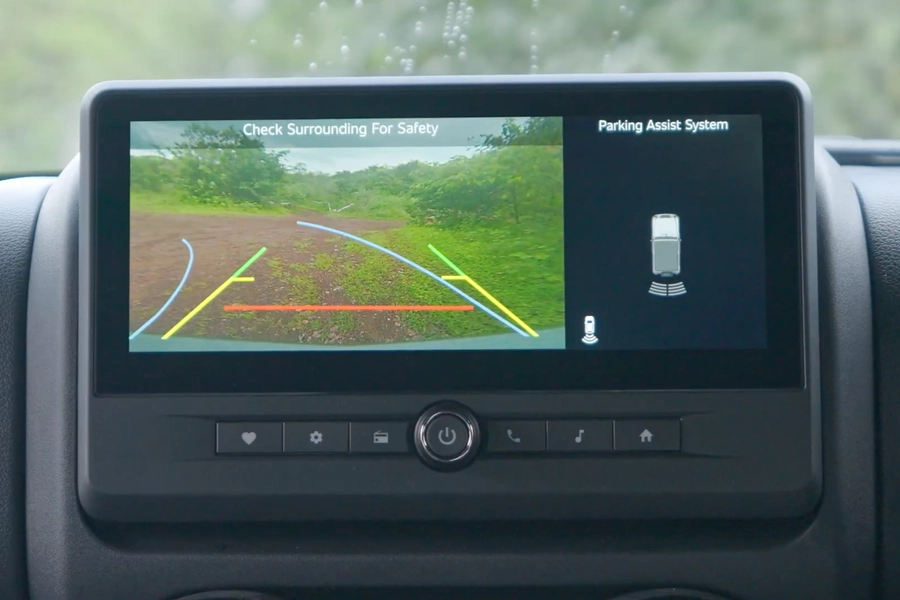
Mahindra Thar Facelift – Rivals and Pricing
The Mahindra Thar continues to hold its ground in the lifestyle SUV segment. Its main rivals remain the five-door Maruti Suzuki Jimny, aimed at practicality seekers, and the 3-door Force Gurkha, which appeals to a niche off-road crowd. However, the arrival of the Thar Roxx in 2024 has brought competition from within Mahindra’s own lineup. Despite that, the 3-door Thar still enjoys a loyal following among purists who value a compact, purpose-built off-roader.

Prices for the updated Thar start at ₹9.99 lakh (ex-showroom) for the RWD variants. The 4WD variants with the 2.2L mHawk diesel cost ₹15.49 lakh (manual) and ₹16.99 lakh (automatic), while the 2.0L mStallion petrol versions are priced at ₹14.69 lakh (manual) and ₹16.25 lakh (automatic).
Mahindra Thar Facelift – Verdict
Five years on, the Mahindra Thar continues to be more than just an SUV it’s a statement of individuality. The facelift feels a little more mature, yet still carries that raw, mechanical soul that enthusiasts fell in love with back in 2020.

Yes, it could’ve borrowed a few tricks from the Thar Roxx, like the Watt’s link rear suspension, and the lack of modern touches such as leather seats, cooled seats and even the electronic power steering could sway few customers. But at its core, the Thar remains unapologetically itself rugged, capable, and built for those who’d rather take the road less travelled. It’s not trying to be everything for everyone, and that’s precisely its charm.


Pingback: The Evolution of Legends: The 10 Most Important Mahindra Jeeps That Led to the Thar - Shutterdrives